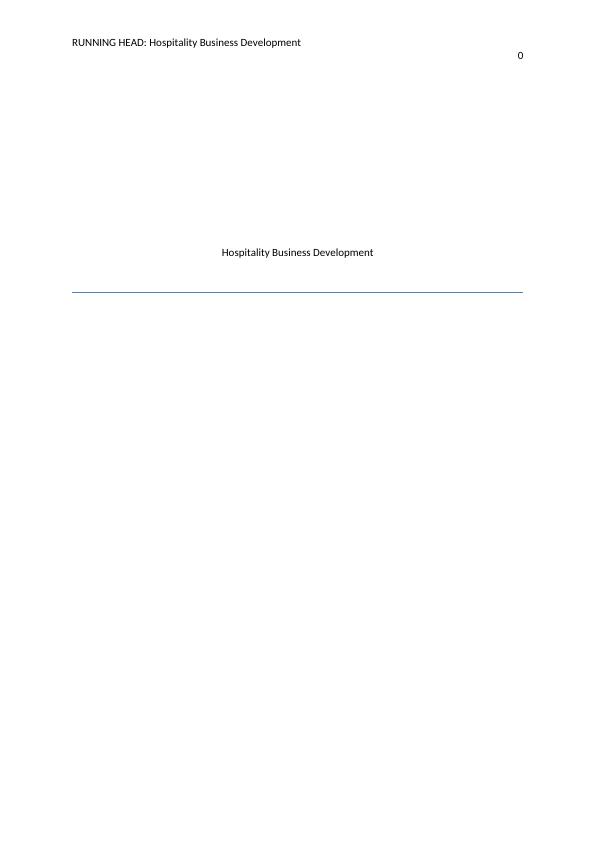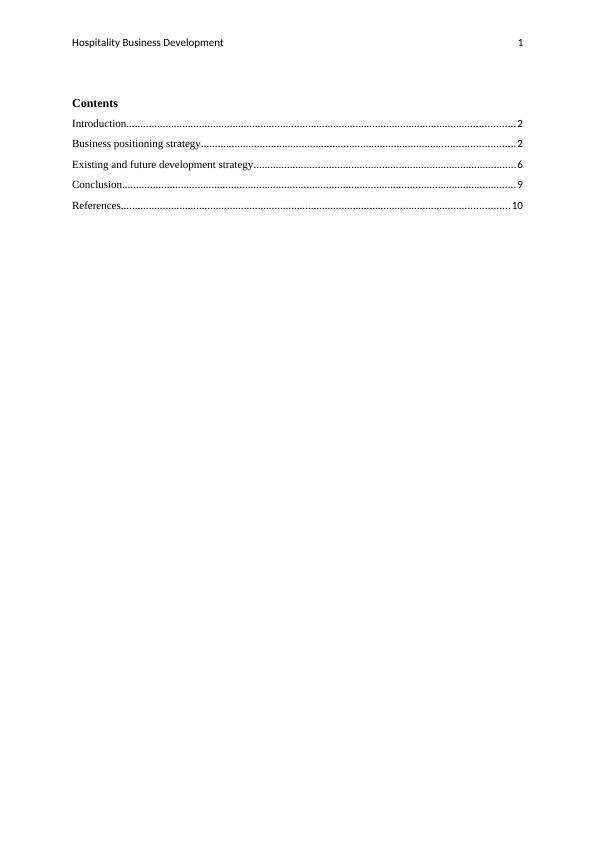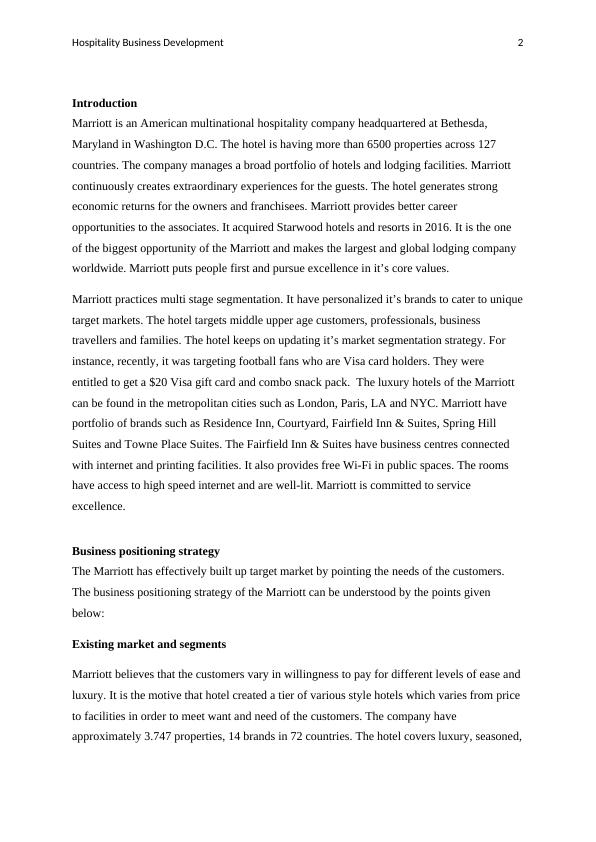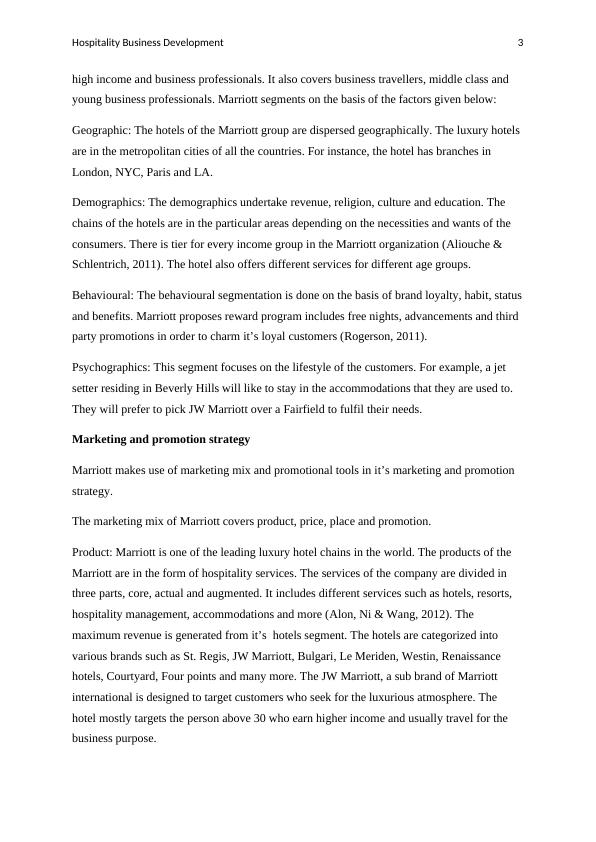Hospitality Business Development
This is a Student Study Guide for the Hospitality Business Development module at The Business School, Edinburgh Napier University.
13 Pages4307 Words151 Views
Added on 2023-06-07
About This Document
This article discusses Marriott's business positioning and development strategy, including its market segmentation, marketing mix, sales techniques, competitive advantage, and growth strategies. Marriott has built a reputation for creating high-quality products that ensure the best experience in the world. The hotel targets middle-upper age customers, professionals, business travelers, and families. Marriott has gained a competitive advantage through cost leadership, focus, and differentiation. The hotel has a robust owner and franchisee benefits program to achieve business goals. Marriott provides an expansive portfolio of brands to maximize investment in the hotel. The hotel's operating model consists of single ownership hotels and asset-light franchisee and management contracts.
Hospitality Business Development
This is a Student Study Guide for the Hospitality Business Development module at The Business School, Edinburgh Napier University.
Added on 2023-06-07
ShareRelated Documents
End of preview
Want to access all the pages? Upload your documents or become a member.
International Hotel Management: Marketing Plan of Marriott
|7
|1755
|1
Marriott Service Provision and Quality Management
|10
|2661
|28
Assignment on Digital Marketing | 1
|10
|2306
|13
Report | Entrepreneurship- Marriott International
|11
|2160
|54
International Hospitality Management
|32
|6828
|281
The Effect of Globalisation on IHG's Marketing Strategy
|12
|3501
|79




